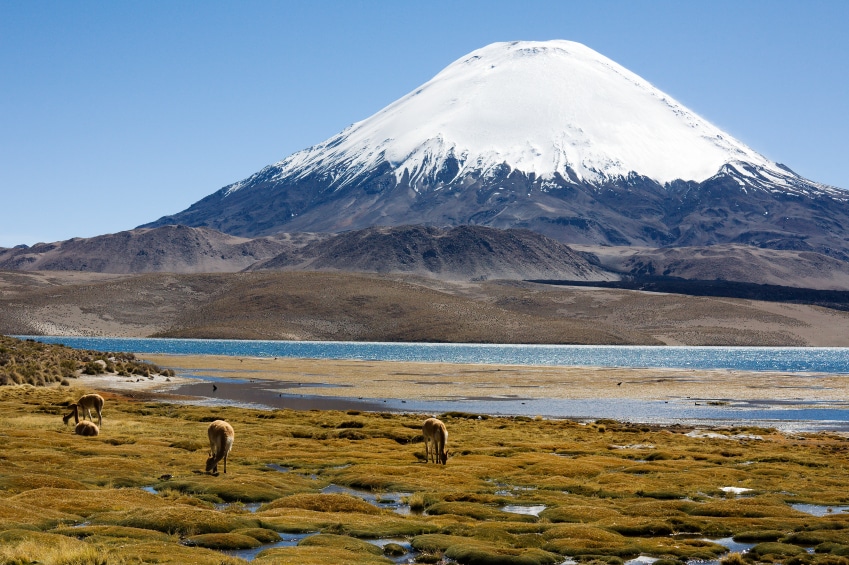The rescue of 33 miners from a collapsed copper and gold mine in the northern desert area of the South American nation of Chile Oct. 12-13 was as compelling as it was dramatic.
The ordeal, which began for the miners on Aug. 5, the day of the collapse, took an amazing turn with the discovery 17 days later that all 33 men were alive and in relatively good shape, albeit hungry from extreme rationing of emergency food supplies meant to last only a couple of days.
The desperation of the trapped men — 32 Chileans and a Bolivian — had immediately turned to hope when a drill bit broke into their underground chamber and they attached a note with the news that all were safe. Families above ground, many of whom had been waiting at the site from the beginning, were ecstatic.
Hope was reborn for them, too.
Chilean president Sebastian Piñera vowed to make every effort to rescue the men, and accepted international assistance to devise and execute a daring plan — painstakingly boring a shaft 28 inches in diameter, wide enough to convey each miner more than 2,000 feet to the surface.

Lauca National Park in Chile
|
Once the rescues began, each man entered an especially fabricated steel capsule — a snug-fitting elevator for one — and rode smoothly from 10 to 16 minutes to the top, there to be greeted by the President, other officials, rescuers, family members and medical personnel.
One by one, these rescued miners emerged from the simple capsule, predictably ecstatic to be rescued after 69 days but also surprisingly energetic as their faces felt either chilly night-time air or the warm rays of sunshine during the day.
My sense is that most Americans know very little about Chile and its people unless they look at the labels on grocery store produce identifying fruits and vegetables as products of Chile. It would be a mistake to simply write off the people as primitive and the country undeveloped and unimportant.
As I watched the TV drama, my mind wondered back to the three weeks or so I traveled in Chile to gather information for The Commission magazine, published by the Foreign (now International) Mission Board, with talented photographer Joanna Pinneo. The stories and photos from that coverage were featured in the May and June issues of The Commission in 1983.
What we discovered in the aftermath of this coverage — highlighted by Joanna’s compelling photographs — was that even among the Baptist audience of missions supporters, Chile had remained largely under the radar, even though Baptist mission work there had been long-standing and the Baptist school in Temuco had a reputation as one of the finest K-12 schools in the country.
One letter-writer later indicated that the coverage and those photos helped spark an interest in missions service that led to the couple’s appointment as missionaries to Chile.
I was among those who knew little about Chile (and I am certainly no expert). The preparation for this trip and the journey itself were my introductions to the nation and to the people of Chile, the skinny finger of a nation that stretches down the west side of South America all the way to the Straits of Magellan, laying claim to the southernmost city in the world, Punta Arenas, just north of Antarctica.
Bordered by nearly 4,000 miles of Pacific coastline on the west and the imposing Andes Mountains on the east, Chile is a land of spectacular geographic contrasts.
It is made up of oppressive desert in the north, where the collapsed mine was located; a fertile breadbasket in central Chile; sweeping vistas a little farther south where indigenous Araucanian peoples farm depleted land against the backdrop of the spectacular Andes; and Patagonia to the south, featuring pristine parks of rugged mountains, crystal lakes and sprawling glacier fields. The fishing industry thrives up and down the Pacific coast.
Nearly 30 years ago, Baptists were planting ministry outposts among the diverse people known as Chileans, from the Spanish whose roots date back to the 1500s to native peoples like the fiercely independent Mapuche. The vast majority of its 15 million citizens today are of white or white-Indian descent.
That the freed miners emerged with such enthusiasm and energy seemed characteristic of what I recalled of people I met and observed on my visit. Generally, they were exuberant, articulate and animated. The chants of “C-H-I-L-E!” as each miner emerged was a reminder that national pride still runs high among Chileans.
Not unlike many of their South American neighbors, Chileans have long debated national politics vigorously. By the time of the early 1980s, recent government leadership had varied significantly. The people had years earlier endured the short-lived Marxist regime of Salvador Allende, overthrown in 1973 by military dictator Gen. Augusto Pinochet, who remained in control until the start of democratic elections in 1989.
By necessity, Chileans have been a resilient people.
Seeing the miners emerge from the capsule and greet those around them with abrazos — or embraces — reminded me of meeting Baptists and being greeted by abrazos common among those who shared a faith in Christ, both majority Chileans and Mapuche believers. It is a good custom, especially considering that Baptists were then and remain today a significant evangelical minority.
Minority or not, it was a Baptist pastor, Marcelo Leiva, who lent spiritual encouragement to the miners at the request of José Henríquez, who led a regular Bible study for his fellow captives to help sustain them until their release.
Baptists continue to have a significant influence in ministry, evangelism, church planting, relief ministries, education and ministerial training in Chile.


